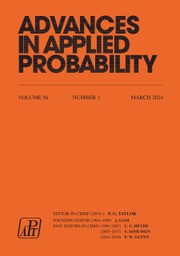No CrossRef data available.
Article contents
Distribution of arrival times in cosmic ray showers
Published online by Cambridge University Press: 01 July 2016
Extract
The theoretical analyses of the extensive air showers developing from the cosmic radiation has its origins in the work of Carlson and Oppenheimer (1937) and Bhabha and Heitler (1937), at a time when it was thought that such showers were initiated by electrons. The realization that protons and other nuclei were the primary particles led to a reformulation of the theory by Heitler and Janossy (1949), Messel and Green (1952) and others, in which the production of energetic pions and the three-dimensional development of air showers were accounted for. But as the soft (electromagnetic) component of the cosmic radiation is the most prominent feature of air showers at sea level, there has been a sustained interest in the theory of this component. Most of the more recent work, such as that by Butcher and Messel (1960) and Thielheim and Zöllner (1972) has relied on computer simulation; but this method has disadvantages in terms of accuracy and presentation of results, especially where a simultaneous analysis of the development of air showers in terms of several physical variables is required. This is so for instance when the time of arrival is one of the variables. Moyal (1956) played an important part in the analytical formulation of a stochastic theory of cosmic ray showers, with time as an explicit variable, and it is essentially this approach which will be adopted in the following. The actual distribution of arrival times is cosmic ray showers, for which results are obtained, is of current experimental interest (McDonald, Clay and Prescott (1977)).
Information
- Type
- Research Article
- Information
- Copyright
- Copyright © Applied Probability Trust 1978

